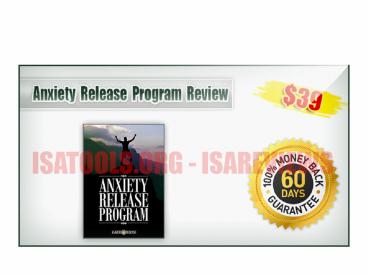Expert Evidence in Chronic Pain PowerPoint PPT Presentation
Title: Expert Evidence in Chronic Pain
1
(No Transcript)
2
No one wants to live with back or neck pain but
many people do. Some believe there are only two
options, pain or surgery therefore many back and
neck pain sufferers will choose to continue
dealing with escalating pain medications and
injections for relief. Unfortunately, over time
these become less effective and must escalate.
There will eventually be a point when the doctor
discontinues prescribing high doses of pain
medication due to the fact that he now feels the
risks outweigh the benefits and that includes the
risk of drug abuse. The bottom-line may be that
patient will have to live with some pain and hear
the comment "not everyone gets well". Where does
this leave the patient? In order to overcome
these issues, we must first understand what pain
is and how it works. Pain is conveyed to the
brain by a type of sensory nerve which only
carries pain and these extend to every part of
the body. No matter what kind of pain is present
in the body both sensory and motor nerves are
involved. Pain is more than just an absolute sign
of physical injury, it also a subjective
interpretation. This combination allows the
individual to pinpoint the location of the
problem, how severe the problem might be
(intensity) and the nature of the problem (for
example, a burn versus a sharp pain). Pain can
come from any number of things. Injury is a
leading reason, but pain may also be produced
through illness, repetitive motion, anxiety, or
depression.
3
Pain that is a protective mechanism and is
immediately disruptive to normal routine is
referred to as acute pain. Acute pain often
results from actual tissue damage such as when
you are cut, bruised or have a broken bone. Other
examples might include a burn from touching a hot
object, catching your finger in a car door, or
fallen and scraping your knee on pavement. Acute
pain is a sudden and intense pain followed by a
more aching pain. It is typically short and then
resolved once the damage to the tissue is
complete. However, if the pain persists over time
then it can evolve into chronic pain.Acute pain
can also be associated with poor circulation or
dehydration that might produce headaches or
muscle cramps. Acute pain will normally diminish
as the area is treated and the cause of the pain
is removed or healed.Chronic pain is generally
defined as pain that lasts beyond the normal time
to heal from an injury. This is commonly thought
of as beyond 4-6 weeks. Once the body has
physically healed, the pain persists. There are
two large groupings of those who suffer chronic
pain. Individuals who have a chronic disease such
as osteoarthritis or degenerative disc disease
will have ongoing pain because their disease
continually progresses.
4
The second group includes those who, although
Anxiety Release Program Review they have healed
from the initial incident aren't fully relieved
of pain and it continues for no apparent reason.
This can occur for numerous reasons including the
fact that the body may have compensated for the
injury and that compensation now causes more
pain. This includes the body's own creation of
scar tissue or adhesions which are a natural
mechanism for healing, but the scar tissue itself
may be pressing on nerves or have trapped pain
nerve fibers within the tissue that now causes
more pain. Long term pain can also be from
unknown causes but this does not invalidate the
patient's perception of pain. Pain occurs for a
reason and if it persists, there is a problem.
Chronic pain stimulates the nerves continually
and if not resolved can make the nerves more
sensitive to pain. This is another downward
spiral that can affect those with back pain. Over
time, there is so much stimulation of the nerve
in the form of http//nomorefakereviews.ning.com/a
rticles/anxiety-release-program-ebook-review pain
that it actually changes the nerve and causes
ongoing pain even after the problem has been
resolved. It seems that the pain signals to the
nervous system even without tissue damage. One of
the unfortunate outcomes of chronic pain can be
depression. It is now widely known that pain is
the physical sensation that also has a
psychological element which is why it can be so
difficult to treat and live with long term. Pain
affects a person's perception of life and this
can lead to symptoms of depression due to the
frustration and isolation associated with the
inability to find relief.

